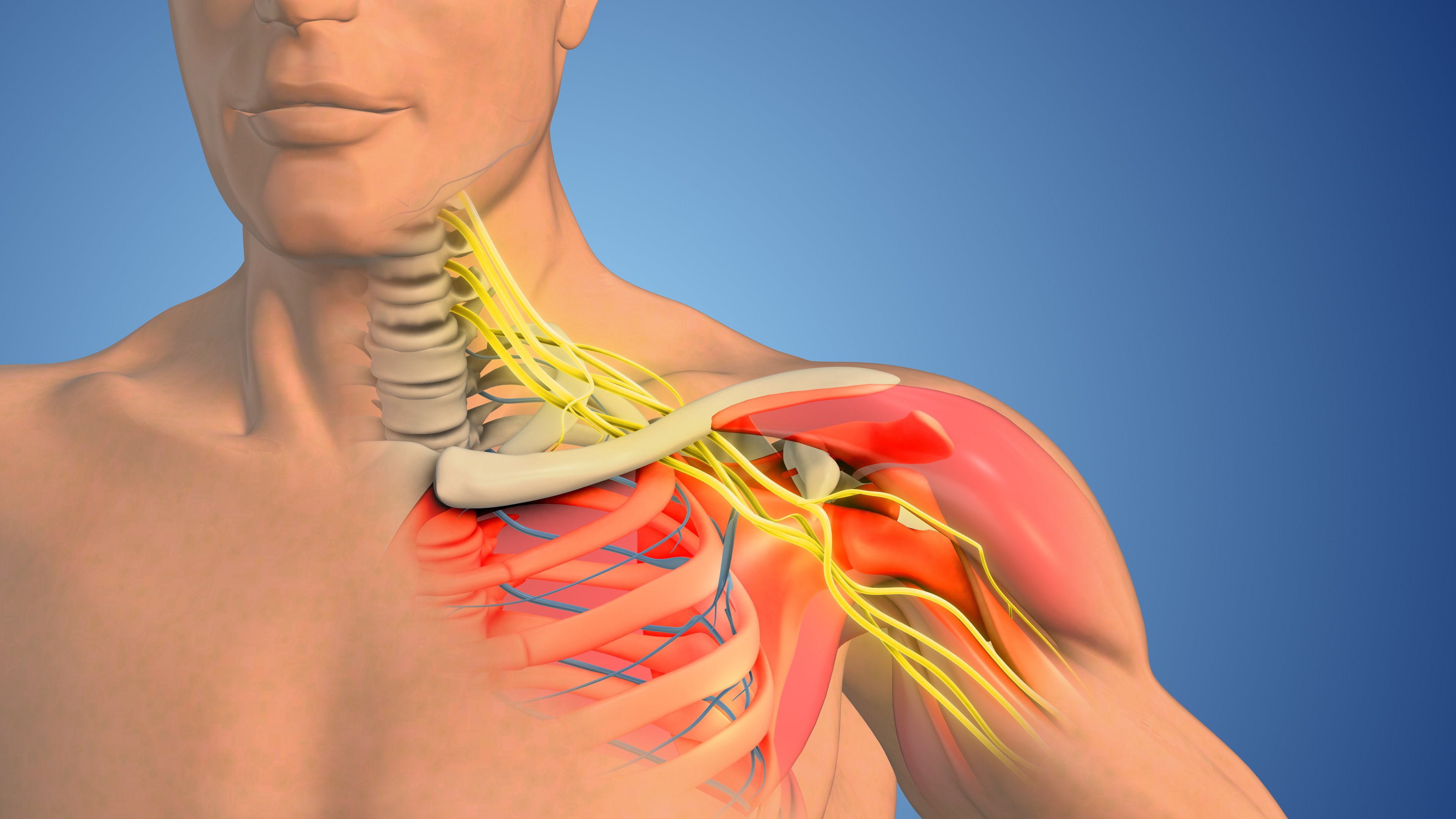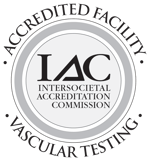Thoracic Outlet Syndrome (TOS) is a complex condition that occurs when blood vessels or nerves in the thoracic outlet—the space between the collarbone and first rib—become compressed. This can lead to a variety of symptoms that often affect the arms, shoulders, and neck, and in some cases, can be mistaken for other conditions such as carpal tunnel syndrome or cervical spine disorders.
At the Vein Institute at The Cardiovascular Care Group, we believe in empowering patients with knowledge to better understand their vascular health. Here’s what you need to know about TOS.
What Is Thoracic Outlet Syndrome?
TOS refers to a group of disorders involving compression of the nerves (neurogenic TOS), arteries (arterial TOS), or veins (venous TOS) as they pass through the thoracic outlet. The type of TOS determines the symptoms and treatment approach.
- Neurogenic TOS is the most common, accounting for over 90% of cases.
- Venous TOS involves compression of the subclavian vein and may lead to blood clots.
- Arterial TOS is the least common but can be the most serious, involving compression of the subclavian artery.
Prevalence and Risk Factors
While exact numbers are hard to determine due to underdiagnosis, TOS is estimated to affect between 3 to 80 people per 1,000 in the general population. It tends to affect young to middle-aged adults, with a higher prevalence in women.
Common risk factors include:
- Repetitive overhead movements (athletes, mechanics, hairstylists)
- Poor posture
- Congenital anatomical variations, such as an extra rib (cervical rib)
- Trauma or previous injury, including whiplash or broken collarbones
- Weightlifting or bodybuilding
- Tumors or growths in the neck or upper chest (rare)
Symptoms of TOS
Symptoms can vary based on the type of TOS:
- Neurogenic TOS: Numbness, tingling, and weakness in the arm or hand, especially when lifting the arm.
- Venous TOS: Swelling, heaviness, or bluish discoloration of the arm.
- Arterial TOS: Coldness, paleness, or weakness in the arm; in severe cases, sores or gangrene.
As these symptoms overlap with other conditions, TOS can be challenging to diagnose.
How Is TOS Diagnosed?
Diagnosing TOS requires a comprehensive evaluation that may include:
- Medical history and physical examination
- Provocative tests to reproduce symptoms (e.g., Adson’s test, Roos test)
- Imaging studies such as ultrasound, CT angiography, or MR angiography to assess vascular structures
- Nerve conduction studies or electromyography (EMG) for neurogenic TOS
- Venography or arteriography for suspected vascular compression
At the Vein Institute at The Cardiovascular Care Group, our vascular specialists use state-of-the-art noninvasive vascular testing in our IAC accredited lab to assess blood flow and detect signs of compression or thrombosis.
Treatment Options
The treatment for TOS depends on the type and severity:
Conservative Management
Most cases of neurogenic TOS respond well to:
- Physical therapy focused on posture and strengthening
- Pain management with anti-inflammatory medications
- Activity modification to avoid provocative movements
Surgical Intervention
Surgery may be recommended for:
- Persistent symptoms that don’t respond to conservative treatment
- Vascular TOS with blood clots or arterial damage
- Anatomical abnormalities like a cervical rib
Surgical options include decompression of the thoracic outlet by removing the first rib, releasing tight muscles (scalenectomy), or repairing damaged vessels.
When to Seek Help
If you experience arm pain, numbness, or swelling that worsens with activity, don’t ignore it. Early diagnosis and treatment are key to preventing complications and restoring normal function.
Expert Care at Vein Institute at The Cardiovascular Care Group
Our team is experienced in diagnosing and treating all types of Thoracic Outlet Syndrome. With in-house diagnostics and a personalized approach to vascular care, we’re here to help you get back to living comfortably.
If you have questions about Thoracic Outlet Syndrome or need to schedule an evaluation, contact our team today.








.jpg?width=944&name=Castle-Connolly-Top-Doctors-Emblem-Large%20(4).jpg)